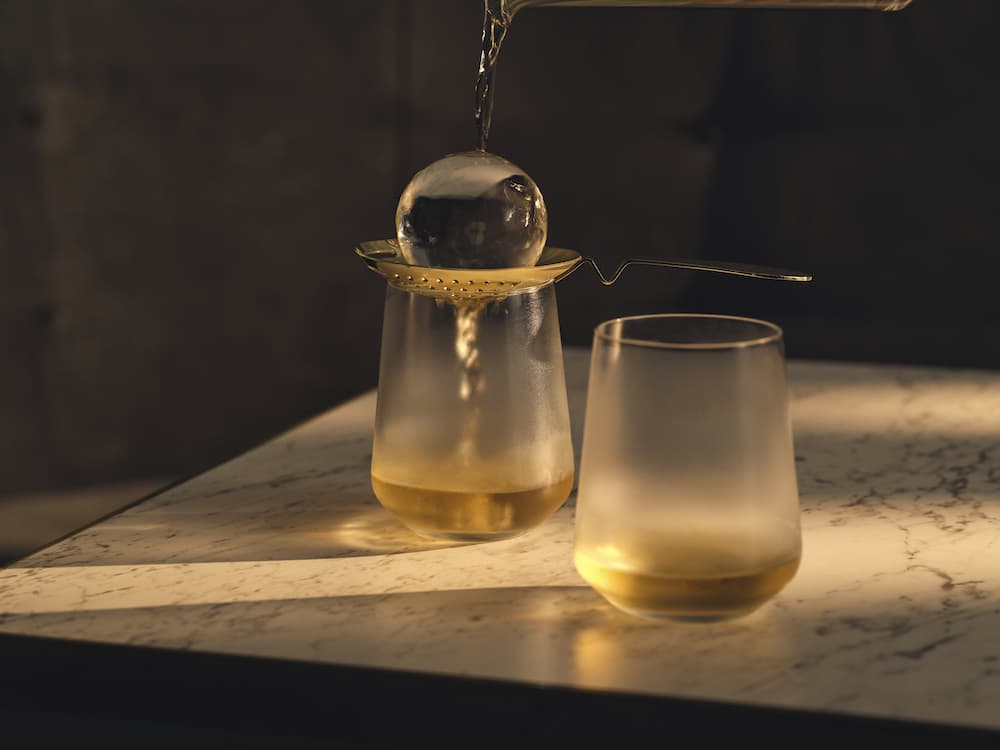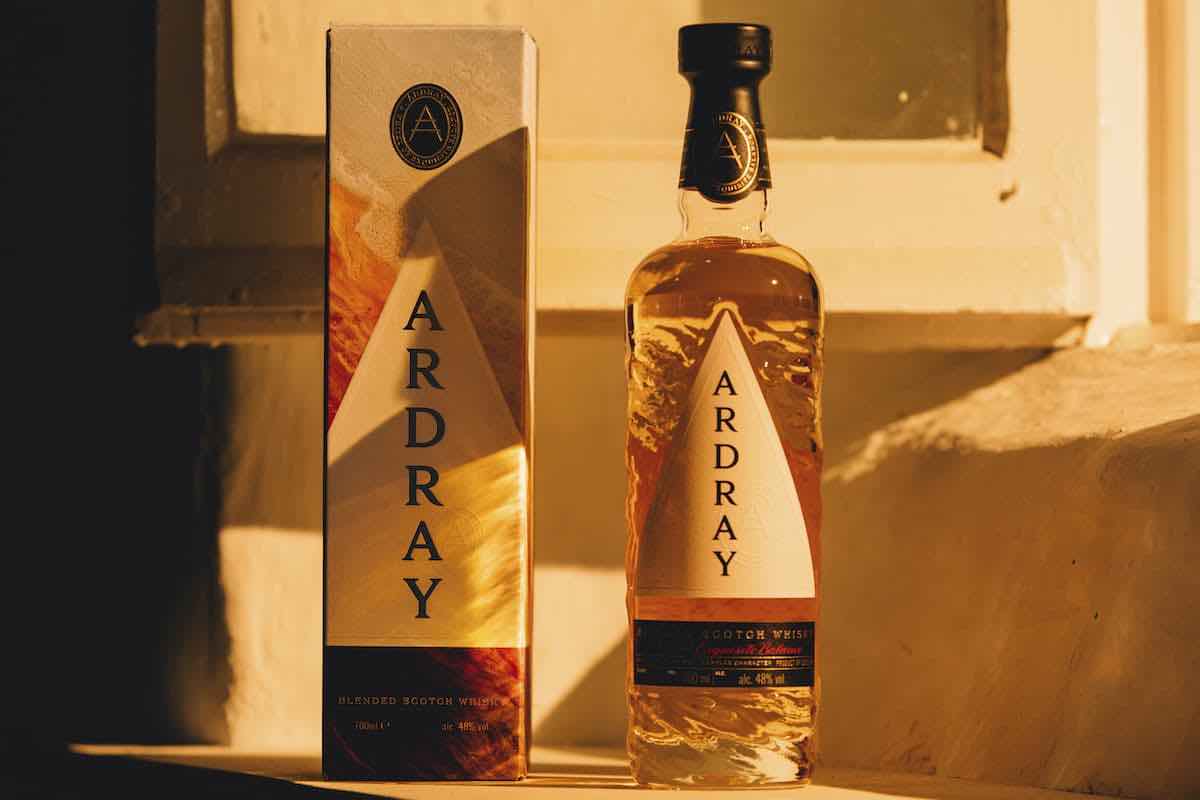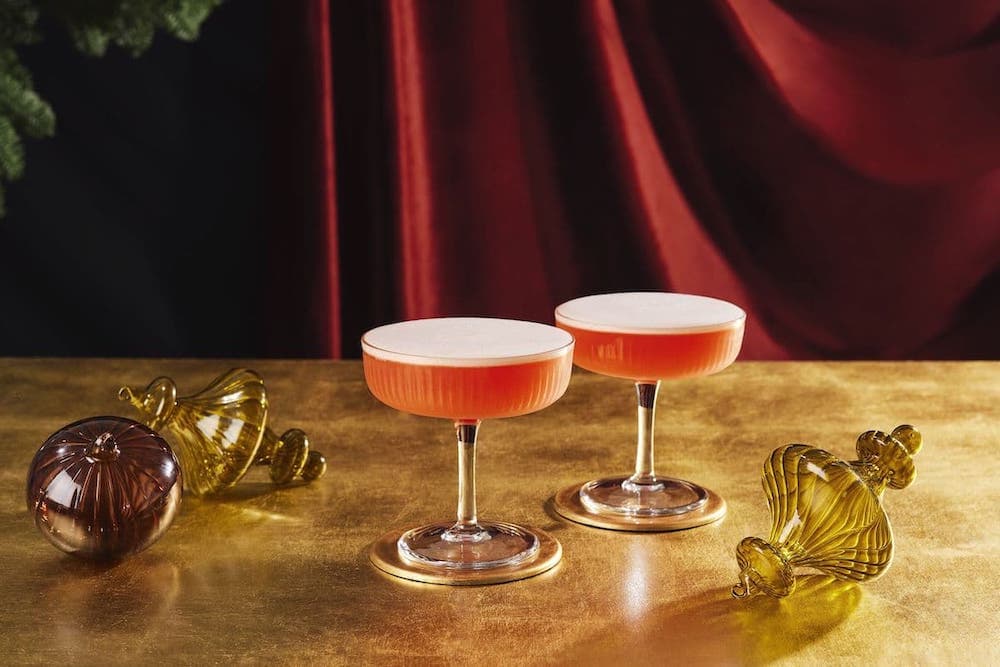In 1923, Suntory founder Shinjiro Torii built the Yamazaki distillery, which soon produced Japan’s first malt whisky. One hundred years later, the drinks multinational that bears his name—Beam Suntory—is marking that centenary with the release of Ardray, a new blended scotch whisky that is its first new scotch brand in five years.
Talk about things coming full circle. Suntory was most responsible for importing Scottish distillation methods to Japan, and now it’s exporting its own vaunted blending methods back to the old world. (This is not the first time Beam Suntory has embarked on a cross-continental collaboration. It previously coupled Jim Beam Master Distiller Fred Noe with Suntory Chief Blender Shinji Fukuyo to make Legent bourbon).
The thought behind Ardray—a portmanteau blending the Gaelic words “ard,” for “high,” and “ray,” for “light”—was to create a blended scotch similar to what Torii may have tasted in his own research into the category well over a century ago. The difference, according to Beam Suntory’s Chief Blender for scotch, Calum Fraser, was that those blends would have had a richer mouthfeel and a long, drawn-out finish.
To achieve that aim, Beam Suntory sourced malt and grain whiskies from its own portfolio of Scottish distilleries—which includes the likes of Laphroaig, Bowmore, and Glen Garioch—as well as third-party partner the Edrington Group, which counts the The Macallan, Glenrothes, and Highland Park distilleries under its umbrella. These whiskies, which ranged in age up to 20 years old and represented a broad swath of Scotland’s terroir, were aged largely in ex-bourbon casks and sherry-seasoned European oak.
In a reflection of the near microscopic attention to detail that characterizes the Japanese blending industry, the Scottish team responsible for Ardray began with a blend composed of 5% malt and 95% grain—and then worked their way up to 95% malt and 5% grain, working in increments of 5%. Each time the team believed they may have found a winning combination, they created a blend at 1% increments within 15 percentage points, leaving no stone (or in this case, scotch blend) unturned.
As part of a team of journalists invited by Beam Suntory to experience Ardray in its natural habitat—Edinburgh and the Scottish Highlands—this past spring, I had the chance to sample that blend first-hand. The spirit, which is bottled at a strength of 48% ABV, presents a nose that evokes wet, earthy malt and sweet orchard fruits in equal measure, with a solid grounding of peat that brings a semi-recently extinguished fireplace to mind. It is indeed rich on the palate, with a buttery, creamy texture that rolls pleasantly across the palate and leaves flavors of grilled peaches, wood spice, and caramelized vanilla in its wake before ending on a definite though gentle touch of peat that lazily lingers with warming spice.

As one of our activities during the trip, we were invited to step into the role of blender and mix four different whiskies representing Ardray’s building blocks—ex-bourbon matured blended grain, ex-bourbon matured blended malt, ex-bourbon matured peaty blended malt, and ex-sherry European oak matured blended malt—into a cohesive whole. I’ll simply say that my iteration—entitled “Yardra” and heavily constituted of the malt aged in ex-sherry European oak casks—will not be putting any Beam Suntory blenders out of a job.
We also had the opportunity to test-drive what Beam Suntory has conceived as Ardray’s “perfect serve,” a method that requires a rocks glass, a julep strainer, and a high-quality ice sphere. The trick, as it was explained to us, was to position the julep strainer over the lip of a rocks glass, plop the ice sphere into its cup-like bowl, and then pour the spirit directly over said ice, which would then be discarded upon the pour’s completion.
The end result would be a glass of “neat” whisky that had nonetheless passed through ice to reach its final destination—something like the scotch equivalent to water running down an ice-covered mountain peak. Crucial to its success was the amount of time it took to pour the whisky over the ice: Group testing suggested that a pour time of eight seconds was enough to slightly chill the whisky without diluting its taste, while a length of 15 seconds or more introduced more water than what was desirable for a sipping spirit priced at $85.
Ardray blended scotch whisky was released on June 5, with an initial rollout in New York, Los Angeles, London, and Shanghai. While Ardray is limited to those locales for the time being, anyone living outside of them shouldn’t fret too much—the whisky is blended via a double solera process, ensuring that plenty of that first-release blend exists to guide the next batch.



